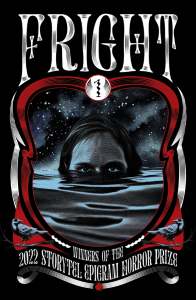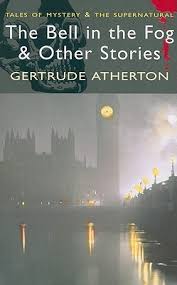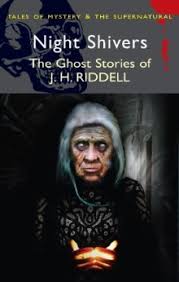
© Epigram Books
A couple of months ago on this blog, I reviewed an anthology of horror stories set in modern-day Singapore called, appropriately, The New Singapore Horror Collection, written by local author S.J. Huang. Now I’ve just finished reading a collection called Fright 1, containing 11 more scary stories set in the southeast Asian city-state, which my partner was kind enough to buy for me as a Christmas present.
Unlike The New Singapore Horror Collection, each story in Fright 1 is penned by a different person. These 11 writers were the top-ranking entrants in a short-fiction competition held last year. As the book’s introduction explains, Fright 1 “showcases the winners and finalists of the 2022 Storytel Epigram Horror Prize, and celebrates all subsets of the horror genre, told with a Singaporean twist.”
The first thing that struck me about Fright 1 was the preponderance of female writers – eight out of 11. This might be a surprise to the many people who’ve traditionally associated the horror genre with male writers, although anyone familiar with the work of Angela Carter, Shirley Jackson, May Sinclair, Daphne du Maurier, Anne Rice, Charlotte Perkins Gilman, Mary Elizabeth Braddon and the criminally underrated Dorothy K. Haynes, to say nothing of Mary Shelley, would argue otherwise. Thus, the collection was doubly interesting for me. Not only did its stories have a setting, Singapore, that I’m not very familiar with, but many of its themes were ones that impact on women – arranged marriages, pregnancy, sexting and, generally, being wronged by duplicitous men. These being horror stories, such themes are refracted through a lens that sends them into the realm of the supernatural and macabre.
Fright 1 gets off to a solid start with Meihan Boey’s The General’s Wife, which is set in past times and is about an unremarkable young woman (‘with crooked shoulders and a pockmarked face’) whose family are desperate to get her married off to someone, anyone, so that they no longer have to be responsible for her. When a mysterious, older, wealthy man known as the ‘General’, living on one of Singapore’s little satellite islands, requests her hand in marriage for no obvious reason, they don’t ask questions. She’s hurriedly packed off to the island. What follows is a tale of skulduggery involving deceit and sorcery, with suggestions of Bluebeard and even Jane Eyre (1847), impressively told and grippingly paced. My only criticism is that I found the ending slightly rushed, although it contains a satisfying hint that the story’s narrator is no longer the shrinking violet she used to be.
Also set in historical Singapore is Dew M. Chaiyanara’s Under the Banana Tree, which is about a kampung – the Malaysian term for village – that’s terrorised by a pontianak when it takes up residence by the tree of the title and starts making “agonised wails that pierced the night and made all the villagers rush to slam their windows shut, bolt their doors and hold each other tight.” According to Wikipedia, a pontianak is a supernatural creature found in Singaporean, Malaysian and Indonesian folklore that “usually takes the form of a pregnant woman who is unable to give birth to a child. Alternatively, it is often described as a vampiric, vengeful female spirit.” A woman in the village – evidently the only person there with a spine – resolves to go and tell the ponianak to, basically, shut up. To her surprise, she finds herself developing a bond with the creature. She also learns that they have more in common that she could ever have imagined.
Meanwhile, a non-folkloric and very modern supernatural being is devised for Kelly Leow’s story Breakwater. This posits the idea that people subjected to extreme humiliation on social media, so that their lives are ruined, they end up living in shame and they vanish from their former social circles, actually, to a certain extent, ‘die’. Not enough to leave behind a ghost, as many people believe happens when you physically die, but enough to create a semi-ghost, a ‘shade’. Breakwater features a serial online-abuser being trailed, unbeknownst to him, by the shades of his former victims – one of which partly narrates the story. I liked Breakwater a lot, not only because its central conceit feels genuinely new, but also because it’s set in Singapore’s East Coast Park. The park is at the back of my residence and is an evocative place at night, one where, as Leow observes, “Cargo ships form a ghostly city out on the horizon, lights glittering in rows like the windows of apartments.”
Among the male writers represented, Teo Kai Xiang’s Untitled Train Story uses another well-known part of Singapore as its setting, the city’s MRT system. Workers digging out a new MRT line discover a mysterious tunnel that seems to have existed a long time before trains began running underground. It’s apparently man-made, its walls are covered in strange symbols, and it’s formed out of some ‘sleek and almost metallic black substance’. I began the story wondering if it would turn into a Singaporean variant on H.P. Lovecraft’s seminal story Pickman’s Model (1927), which helped establish the trope, now common in the horror genre, of fleshing-eating, ghoul-like creatures living in secrecy under the streets of a modern-day city – see, for example, the movies Death Line (1973) and C.H.U.D. (1984). Later, however, it becomes clear that Xiang’s story has more in common with a different strand of Lovecraft’s work – his tales of cosmic horror. There’s something at the end of the tunnel that isn’t just deadly. It also has the power to do disturbing things to the minds of those who encounter it and manage to survive.
For my money, however, the collection’s best tale is Dave Chua’s Hantu Hijau, which in Malay means ‘green ghost’. It’s narrated by a young girl who becomes obsessed with a ghost, a female one, that’s said to haunt her Singaporean public housing estate: “Some doubted her existence; merely a hyper-localised myth to get children to return early and in bed before eleven, but I knew she had always been here, biding her time.” The story is atmospheric and also manages the important trick of making the reader both frightened of its ghost and sympathetic towards it. At the same time, Chua makes it believable by lacing the supernatural plot with descriptions of the block and its assorted inhabitants (“Despite the decrepit state of some of the storeys, the residents were full of kindness and humanity”) and with accounts of the girl’s mum – a hard-pressed single mother whose desperate attempts to make money and keep them afloat gradually become shady and even criminal. With its blend of the ghostly, the grittily realistic and an urban myth that might not be so mythical, Hantu Hijau reminded me slightly of the Clive Barker story The Forbidden (1986), which later became the basis for the Candyman movies.
Not quite everything in the collection was to my tastes. I felt a few stories had rather too much happening for them to be properly frightening. Also, a couple of times, the social issues being explored were used for ‘body-horror’ moments that had me thinking of films like David Cronenberg’s The Brood (1979) or Brian Yuzna’s Society (1989) – good, grotesquely-surreal fun, yes, but too far-fetched for the build-up that’d preceded them. Maybe it’s just me. I feel that to be truly scary, a story has to be at least partway believable. But if it contains too many incidents, or too much over-the-top gloop, it becomes less believable and hence less scary. Overall, though, I was impressed by Fright 1 and I strongly recommend it.
For the record, the 2022 Storytel Epigram Horror Prize judges ranked Dew M. Chaiyanara’s Under the Banana Tree as the third-best entry, Dave Chua’s Hantu Hijau as the runner-up, and Kelly Leow’s Breakwater as the winner. The collection can be purchased here, as can an audiobook version of it.



